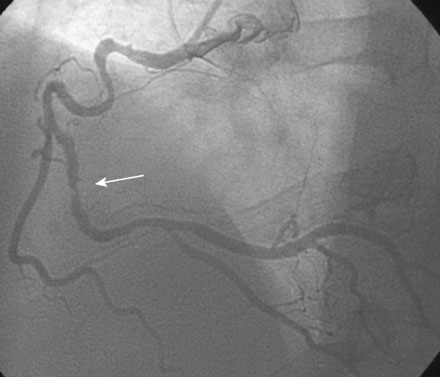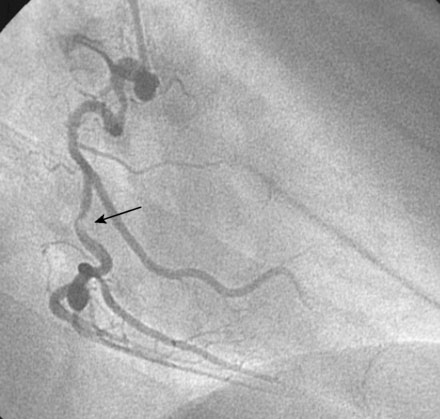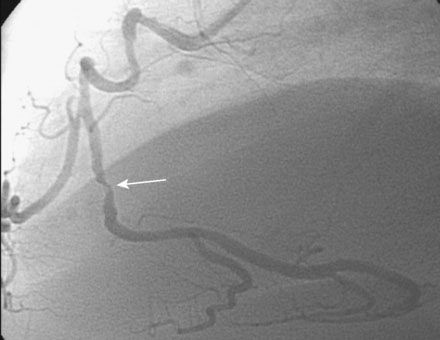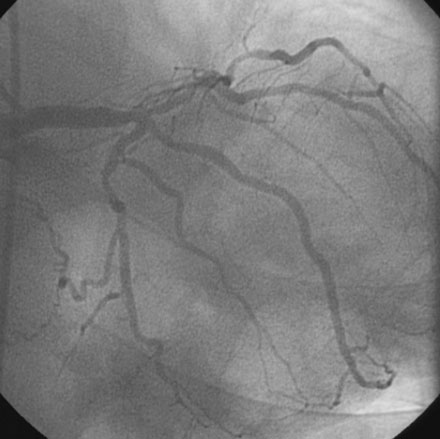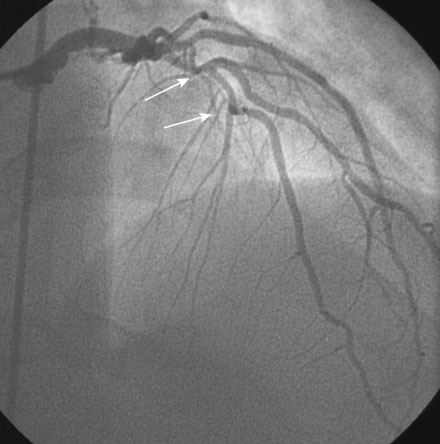CASE 12 Excessive Coronary Tortuosity
Cardiac catheterization
The culprit lesion involved the right coronary artery. There was a severe stenosis in the midportion of the right coronary artery past an extremely tortuous segment of the artery (Figures 12-1, 12-2, 12-3 and Video 12-1). There was moderate disease in the left anterior descending artery (Figures 12-4, 12-5).
Based on the angiogram and the clinical presentation, the patient’s physician decided to proceed with a percutaneous intervention of the right coronary artery. The severe tortuosity of the proximal right coronary concerned the operator and, anticipating difficulty passing wires, balloons, and stents around the tortuous segment, the operator decided to use a supportive guide catheter and engaged the right coronary artery with a 6 French extra-support right guide catheter (Cordis, XBRCA). Procedural anticoagulation was accomplished with a bolus of unfractionated heparin and a double bolus plus infusion of eptifibatide. The operator crossed the lesion with a floppy-tipped, 0.014 inch guidewire. This wire successfully straightened the proximal tortuosity and allowed passage of a 2.5 mm diameter by 15 mm long compliant balloon (Figure 12-6). The operator chose a 3.0 mm diameter by 18 mm long bare-metal stent. Advancing the stent to the desired segment of the artery proved very difficult. Ultimately, this stent was successfully delivered to the lesion (Figure 12-7 and Video 12-2). The post-stent angiogram revealed a new and concerning lesion proximal to the stent. This segment of the artery straightened substantially with the floppy-tipped guidewire and the physician was unsure if the angiographic appearance represented a “pseudolesion” due to straightening of the tortuous segment by the guidewire or if it represented an injury to the artery from the vigorous attempts at passing the stent. The operator decided to pass another 3.0 mm by 18 mm stent, but was unable to advance it to the desired location (Figure 12-8). After positioning an extra-supportive guidewire (Mailman, Boston Scientific) alongside the first wire, and after deeply inserting the guide catheter, the operator successfully delivered this stent. The angiogram obtained after the second stent was placed showed that the additional wire further straightened the artery (Figure 12-9
Stay updated, free articles. Join our Telegram channel

Full access? Get Clinical Tree


